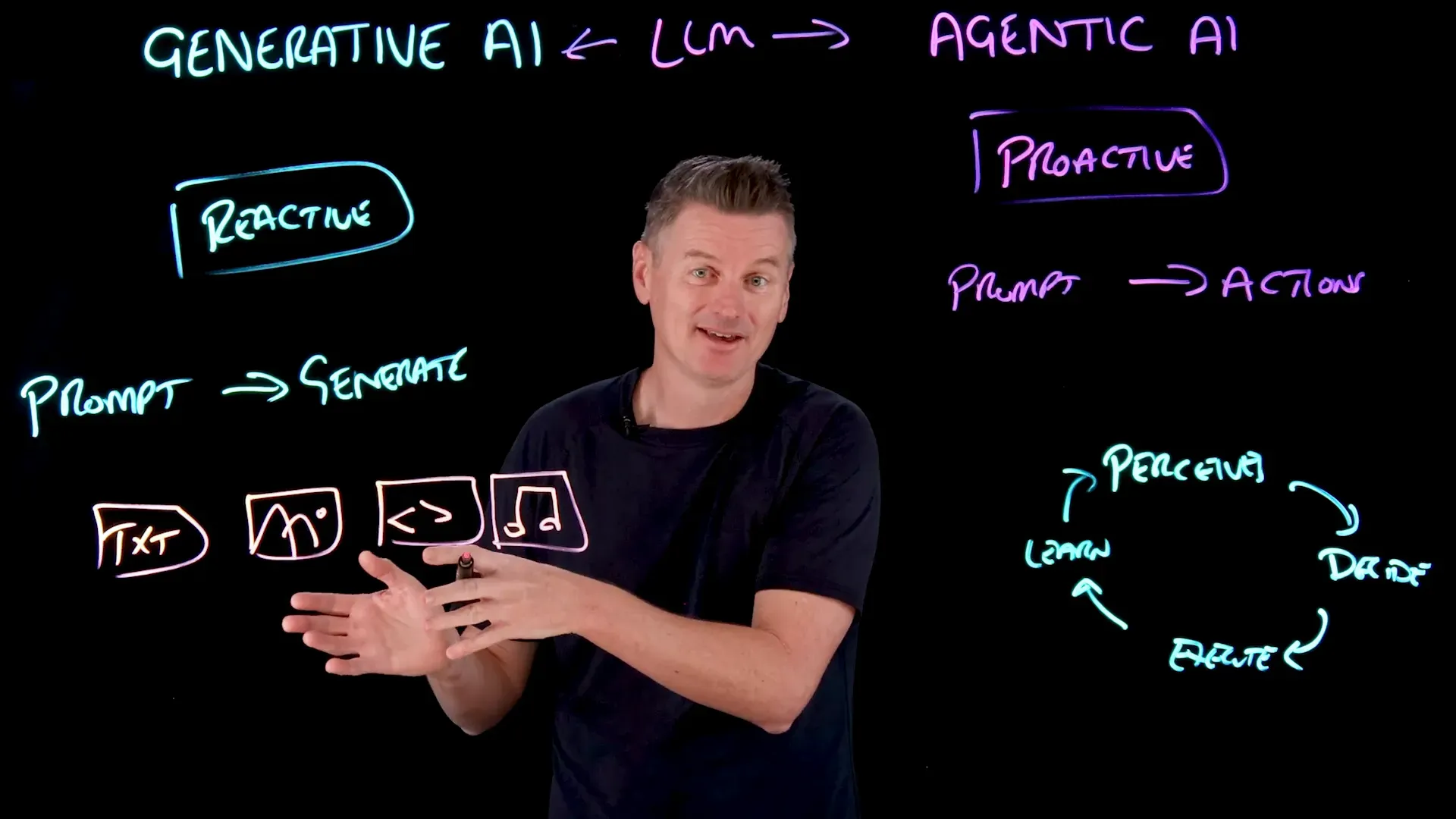In a fast-growing AI world, Understanding the Difference Between Generative AI and Agentic AI It is an important starting point for the effective use of this technology. These two approaches have distinctly different ways of working and roles. This will help us visualize the future of AI that is not just a specialized tool, but an intelligent assistant that can work perfectly with humans.
What is Generative AI? Content-creating response system
Generative AI It is an AI system that many people are familiar with, such as: Chatbots , image generators, or even coding and generating voices. The highlight of Generative AI is that it works in a way that reactive These systems first wait for a command or question from the user and then create content based on that command.
The principle of generative AI is to use massive amounts of data trained to learn statistical relationships between words, image pixels, or sound waves. Upon receiving an order, the AI will predict what is appropriate or should happen next based on the trained data.
For example, when entering a question or sentence into a chatbot, the AI will choose the most appropriate answer from the learned patterns, but the limitation is that the AI will stop working immediately after it has finished generating that content. Without further human orders, they will not proceed on their own.
What is Agentic AI? An AI system that is innovative and hands-on
Unlike generative AI, which focuses on responsiveness. Agentic AI It is an AI system that proactive Although it starts with the same command from the user, Agentic AI will take that command to plan and execute the goal through a continuous multi-step process.
Agentic AI has a complex work cycle. Starting with perceive, then planning and executing, the results are evaluated to improve decision-making in the next round, all with minimal human intervention.
Common Fundamentals of Generative and Agentic AI: Large Language Models (LLMs)
Both generative and agentic AI often use the same infrastructure: Large Language Models (LLMs) Or a large language model that is trained with a huge amount of data. LLMs are at the heart of many chatbots and generative AI tools.
For Agentic AI, these models also act as "brains" that allow systems to think, analyze, and plan through a process called "Agentic AI." chain of thought reasoning Or "step thinking," which helps break down complex tasks into smaller chunks to make them easier to solve.

Generative AI in action
In everyday life, generative AI is used to help create content creatively and quickly, such as writing articles, creating illustrations, and even writing fantasy novels.
An interesting example from real users is the use of chatbots to help write the next chapter of Nelson Demille's fanfiction novel, which shows that AI can be an auxiliary tool that makes content creation easier and faster.
Additionally, for content creators like YouTubers, using generative AI can help review scripts, suggest ideas for cover art, or even create background music.
But the important thing is that AI creates options for humans to screen and refine to get the most desired results, showing that humans are still in control and making the final decision.
Agentic AI in action
Agentic AI is ideal for multi-step and continuously managed tasks, such as a personal assistant system that helps with purchases.
This ability stems from the use of LLMs to think analytically and plan logically. chain of thought reasoning That allows AI to break down complex tasks into small steps and prioritize them like humans.
Complex event planning example: organizing a meeting
Imagine an Agentic AI tasked with hosting a conference. Check availability and make a reservation.
The process is like the AI "talking to itself" to explore the problem and plan before taking action. This makes the management of complex tasks systematic and efficient.
The Future of AI: Generative and Agentic AI Collaboration
Looking ahead, the most powerful AI systems will not be either generative or agentic AI, but will be a smart collaboration between the two.
These AI systems will know when to use generative AI to generate new options or ideas, and when to use Agentic AI to plan and execute on ongoing goals.
For example, AI that can know when to create the next chapter of a fanfic novel is ready immediately after the video is filmed, or even ready to use in real time.

Technical terms (Jargon) to know
- Generative AI: AI that generates new content on command, such as text, images, audio, or code.
- Agentic AI: AI that initiates and implements goals through multiple steps, with the ability to make decisions and adapt.
- LLMs (Large Language Models): Large language models trained with huge amounts of data To understand and build a language.
- Chain of Thought Reasoning: The thought process is a step to solve complex problems, dividing the task into smaller parts.
- Reactive System: A system that responds to commands without resuming itself.
- Proactive System: A system that initiates and implements goals without waiting for additional orders.
Conclusion from Insiderly
Generative AI and Agentic AI are the two poles of the AI world with different but complementary roles.
The collaboration between these two systems will be key to developing AI that is not just a tool, but an intelligent assistant that understands tasks and can truly work with humans.
so Understanding and leveraging both generative and agentic AI properly is the best way to enter a new era of AI that is full of possibilities and innovation.


